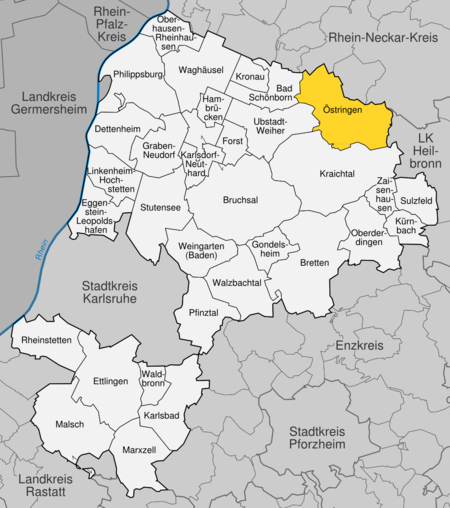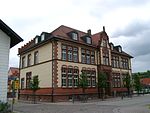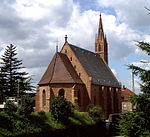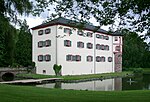Östringen

Östringen (South Franconian: Öschdringe) is a town in Northern Karlsruhe district in Baden-Württemberg, Germany. Östringen is a twin town with Abergavenny, South Wales. Until the district reform on January 1, 1973, Östringen means the district of Bruchsal. The status of central government in 1981 was taken over by the state government for city administration. Extensive deciduous forests take up about a third of the municipal area. The Freibach flows through the core town of Östringen, while the Katzbach flows through the Tiefenbach and Odenheim districts. In the 19th century, a flourishing cigar industry developed in Östringen and Odenheim. In Eichelberg and Tiefenbach, agriculture, especially viticulture, remained predominant.
Excerpt from the Wikipedia article Östringen (License: CC BY-SA 3.0, Authors, Images).Östringen
Am Kirchberg,
Geographical coordinates (GPS) Address Nearby Places Show on map
Geographical coordinates (GPS)
| Latitude | Longitude |
|---|---|
| N 49.219444444444 ° | E 8.7108333333333 ° |
Address
Am Kirchberg 6
76684 , Östringen
Baden-Württemberg, Germany
Open on Google Maps











